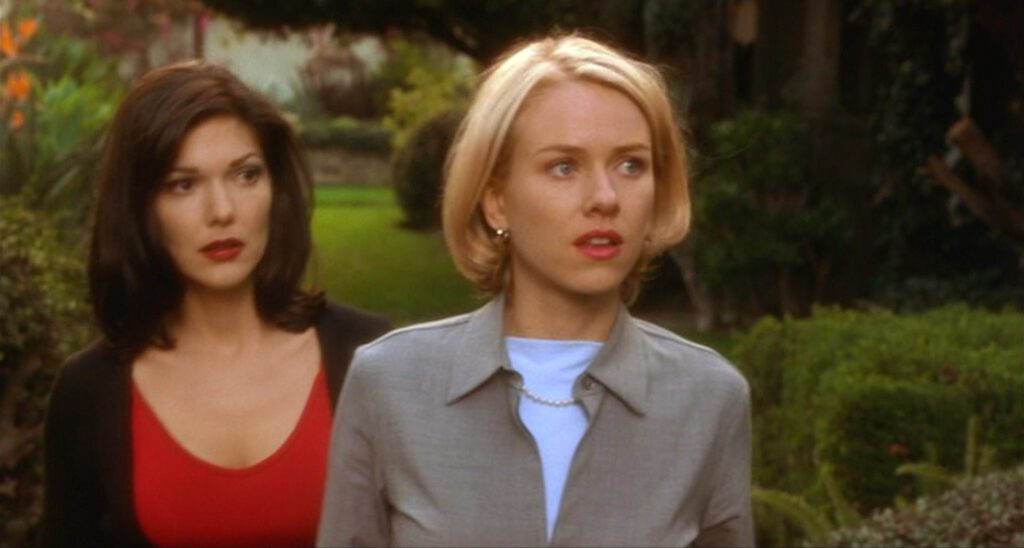
Mulholland Drive
2001, directed by David Lynch
Few movies have driven audiences to so much effort at interpretation as Mulholland Drive. Most of that effort, of course, gets directed merely at ironing out the plot, but if we want to go beyond that – to answer not only the “whats” but the “whys” – we can follow the trail charted out in the original unreliably narrated tale, The Cabinet of Dr. Caligari. Mulholland Drive is essentially a Caligari for the 21st century.
Both Mulholland Drive and Caligari are stories of self-deception and murder, with twists near the end when the central plot is revealed to be the protagonist’s self-serving account of his or her past actions. Both films are framed by a more objective point of view at both ends. Both movies show insight into how the mind works, and both have much to say about their historical context, one depicting guilt and psychical trauma in the aftermath of World War I, the other showing the destructive influence of modern media, represented by Hollywood, on vulnerable ordinary people.
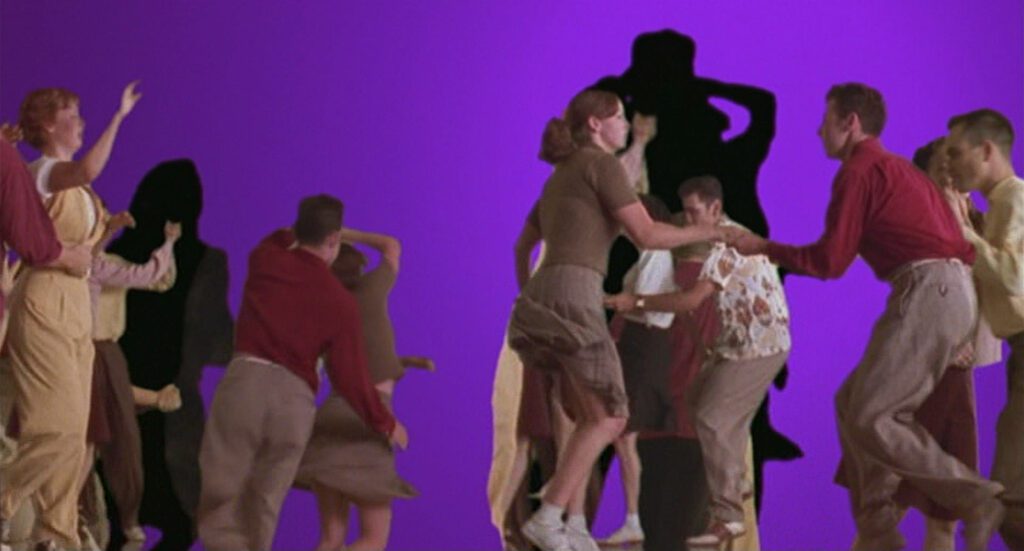
Ironically, in Mulholland Drive the “objective” framing story is more surreal than the inner story about Betty Elms’ arrival in Hollywood and her friendship with the mysterious brunette. The inner story – from the red pillow before the titles to the blue box after Club Silencio – has more than its share of strangeness, but at least it’s told with continuity. In contrast, the “real” story is told via disconnected vignettes whose sense depends on our linking them back to the inner story.
What happened, in short, is that a young blonde named Diane Selwyn came to Hollywood after winning a jitterbug contest in Deep River, Ontario. She had hoped to become a successful actress, but her life fell apart when she was passed over for the lead in a film called The Sylvia North Story, and her lover Camilla, who got the role, dropped her to marry the director. Crushed by jealousy and a sense of her inadequacy, she hired a hitman to kill Camilla then shot herself in the face. Her story of herself as Betty Elms is presented as if it flashes through her mind as she falls into the red pillow in her final moments.
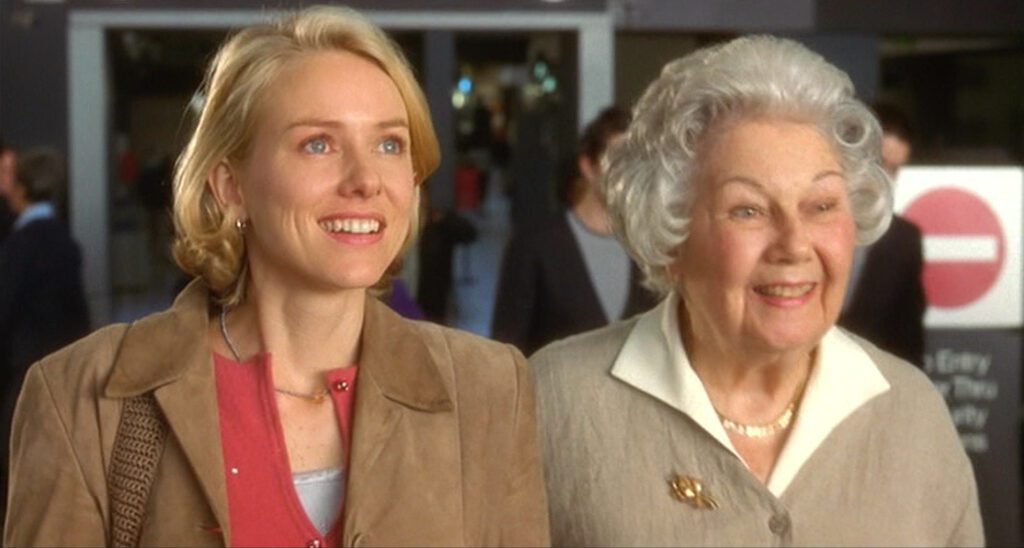
This point of view gives a logic to the various images in her story. The homeless man behind Winkie’s personifies her greatest fear – failure – which of course comes to pass and precipitates her downfall. Club Silencio, near the end of her fictional story, envisions her impending death. The elderly couple, Irene and her male partner, who are so hopeful and encouraging at the airport, are Diane’s public, presumably her hometown audience as they’re also superimposed over the dance contest in the opening shots. At the end of the framing story she imagines the old couple laughing at her failure, and they become a pair of demons chasing her to her death.
In both The Cabinet of Dr. Caligari and Mulholland Drive the protagonist’s story is an alibi, distorting the past and reframing it in the most positive possible light. Here however is the key difference. In Caligari the alibi covers up Francis’s guilt, allowing him to persuade himself that he’s not responsible for killing his best friend. Diane Selwyn is also guily of murder, hiring someone to kill her lover, but in her last moments it’s not so much guilt, but rather failure, that plagues her. Her whole story is constructed to excuse and cover up her defeat, persuading herself that in spite of all that happened she is, in fact, the great star she had hoped to become.
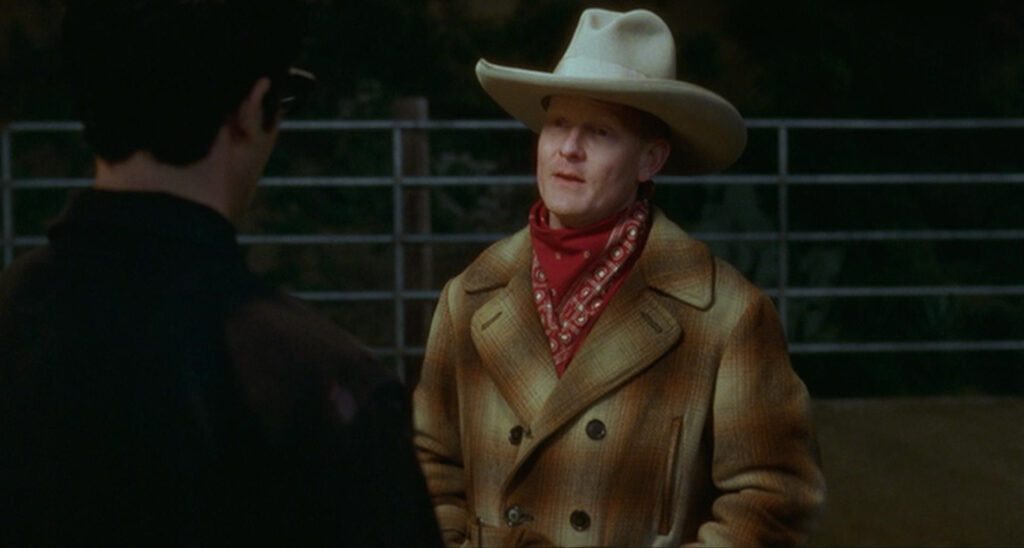
Instead of believing she failed through lack of talent, she imagines that Camilla was chosen because mobsters forced the director’s hand, against his vehement resistance. In fact, she imagines, she was an actress of rare talent, blowing everyone away at an audition, where a casting agent eagerly scooped her up to try out for a major picture. Despite the mob’s interference, the director fell in love with her at first sight, and she only left the set because she was such a good friend to Camilla that she kept an appointment to help her out, taking her to track down “Rita’s” identity at the Sierra Bonita apartments. Like Francis, who always played the hero in his alibi, Betty makes herself the dominant partner, leading the helpless brunette around and inviting her into bed. Instead of being outclassed by someone so much richer, more talented, and better connected, she pictures her lover as an accident victim who just happens to hold a purseful of money that the mob wants back.
There’s a reversal of Caligari at Sierra Bonita. Whereas Francis had tried to stop Alan from asking the somnambulist about his death, here it’s “Rita”, the brunette, who tries to stop Betty from knowing about herself, urging her not to break into the house where she’ll witness her own corpse. However it’s “Rita” who screams at the sight while Betty braces her, playing the stronger character as always. Just as Francis invents Cesare to carry the guilt of Alan’s murder, Diane picks a random man at Winkie’s to bear her all-consuming fear of failure. In her version, as Betty, she has nothing to worry about on that score.
Like so many of David Lynch’s films, Mulholland Drive points again and again at Hollywood. Not only is it set in that world, but the opening titles, taking their cue from the Mulholland Dr. street sign, are printed in the same font as the landmark Hollywood sign, which itself appears in two aerial shots. The famous sign also makes key appearances in Lost Highway and Inland Empire, and it even goes back to Eraserhead where the radiator, with a sock covering the third and fourth coils to form an “O”, is shot to resemble an abstract version of that sign. Running through the Hollywood Hills, Mulholland Drive is a synecdoche for Hollywood itself, which in turn is a synecdoche for the modern global media that grew out of early Hollywood and which wields so much influence over people’s hopes, dreams, and lifestyles. Lynch’s films may seem to criticize Hollywood, but it would be more precise to say they critique the “inner Hollywood” that occupies billions of minds around the world, persuading people like Diane Selwyn (whose surname refers to old Hollywood) to measure themselves against an artificial idea of success.
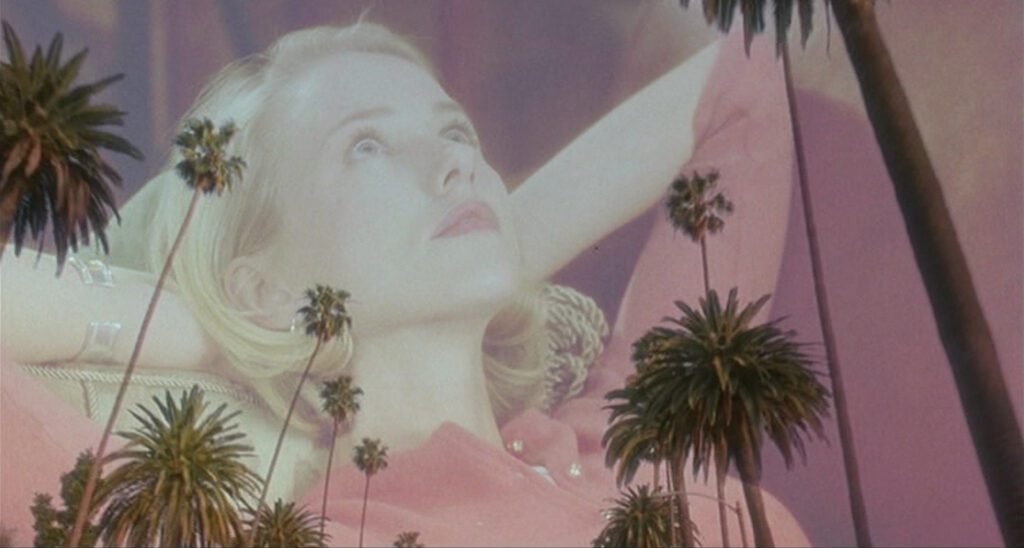
In Lost Highway the Hollywood sign appears at the most significant possible moment behind Mr. Eddy’s car as he avenges an aggressive motorist, showing off his gangster antics to impress Pete Dayton. The sign indicates that Pete is being led into an unreal Hollywood fantasy, and it reappears nine minutes later, superimposed over Pete’s head, as he begins fantasizing about Mr. Eddy’s glamorous platinum blonde girlfriend. In those two scenes Hollywood stands for dramatics, heroism, and glamor – modern definitions of success that few people aspired to before Hollywood existed. Like Pete Dayton, Diane Selwyn dreams of an exalted status high above ordinary life. The world has enough problems when a few tyrants and aristocrats carry such dreams, but when multitudes share the same fantasy it’s unsustainable, and their lives are set up for bitterness and dissatisfaction.
Diane’s fantasy, the inner story of Mulholland Drive, is filled with the character types who populate Hollywood fantasies – gangsters, cowboys, detectives, prostitutes, hitmen, and movie stars. Even in her remote Canadian town, her mind was so thoroughly colonized by Hollywood that she’ll respond to Camilla’s psychological abuse the way she thinks a movie character might respond, hiring a professional killer to avenge herself.
When Diane’s fantasy self arrives in Los Angeles she’s framed by Do Not Enter signs beside her and above her, but she’s facing away from these warnings. For someone so completely sold on the Hollywood dream, for whom failure is worse than death, failure is also inevitable. Although failure is part of every normal person’s life, she has inflated it into an unbearable monster. When the man in Winkie’s says, “He’s the one who’s doing it,” he speaks for Diane, whose life is controlled by the specter of failure. Failure is the antithesis of what Hollywood stands for, but it’s the most common outcome for people who measure their worth by the standards that Hollywood sells its public.
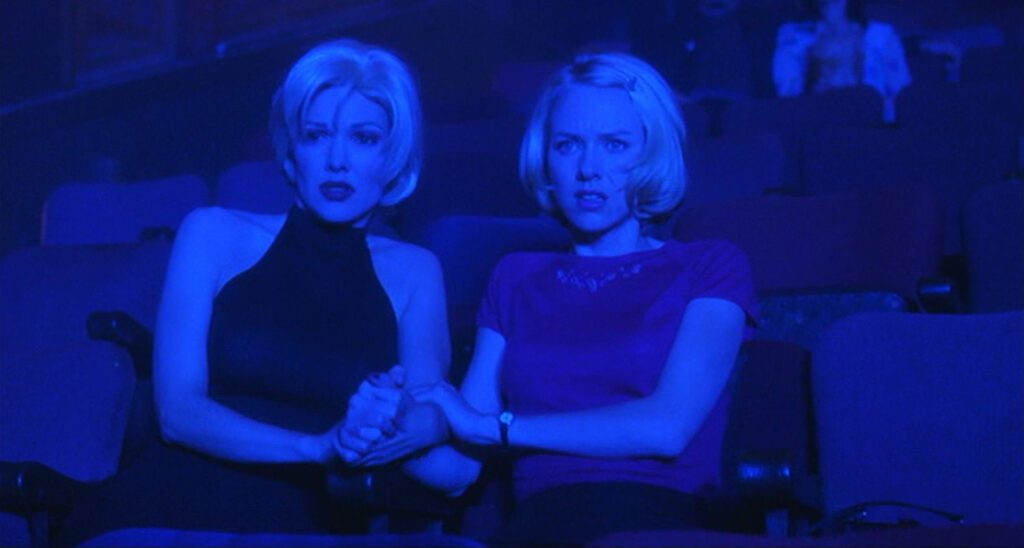
Club Silencio illustrates Diane’s last wave of horror before she dies. The horror of her failure intensifies when she realizes that her Hollywood dream, with its promises of glamor and success, is all an illusion like the act onstage. The word “silencio”, which the blue-haired woman in the box seat utters at the very end, is the living death of all who succumb to Hollywood’s black hole. The blue box is a literal black hole marking the end of Diane’s fantasy, the moment of her actual death, and it expresses the sense of meaninglessness that follows a life spent chasing an empty dream.
CONNECTIONS:
The Cabinet of Dr. Caligari – Framing story; tale of self-deception; inner story is an alibi to cover up protagonist’s crimes or failure
The Wizard of Oz – Framing story; girl seeking an exciting life far from home; Winkies/Winkie’s diner
I Wake Up Screaming – Young woman drawn to the big city by deceptive dreams of glamor
Meshes of the Afternoon – Long dream sequence revealing origins of self-destructive thoughts; symbolic role of a key
Mildred Pierce – Hollywood sign and social critique of Hollywood
Detour – Social and psychological damage caused by the allure of Hollywood
Sunset Boulevard – Famous street in title that stands for Hollywood; story of glamor and self-deception
All About Eve – Story of an aspiring actress whose thirst for success comes to a bad end
Carnival of Souls – Story flashes through character’s mind in an instant
Muriel – Story flashes through character’s mind in an instant
I Knew Her Well – Aspiring actress whose career fails and who commits suicide
Eraserhead – Hollywood sign inserted to point to film’s subject
Veronika Voss – Smiling elderly couple who represents something horrifying
The Moon in the Gutter – Hollywood singled out as a force of deception, seducing people with glamor
Lost Highway – Truth in framing story more surreal than fantasy in inner story; Hollywood sign
L.A. Confidential – Character(s) who come to Hollywood seeking glamor only to meet failure; meaningful insertion of the Hollywood sign
The Truman Show – Hollywood sign as a metonym for modern media
Inland Empire – Hollywood sign; title as a synecdoche or metaphor for Hollywood; homelessness representing fear of failure; update of a German Expressionist film for a new century